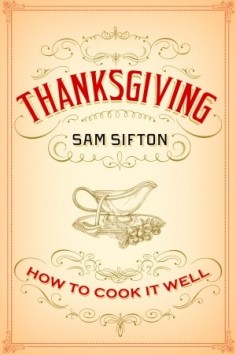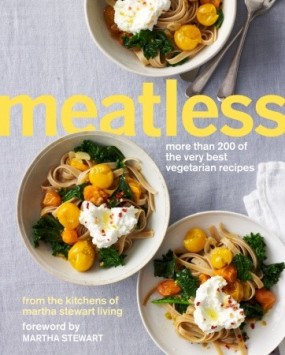A Kitchen in France A Year of Cooking in My Farmhouse
With beguiling recipes and sumptuous photography, A Kitchen in France transports readers to the French countryside and marks the debut of a captivating new voice in cooking.
When Mimi Thorisson and her family moved from Paris to a small town in out-of-the-way Médoc, she did not quite know what was in store for them. She found wonderful ingredients—from local farmers and the neighboring woods—and, most important, time to cook. Her cookbook chronicles the family’s seasonal meals and life in an old farmhouse, all photographed by her husband, Oddur. Mimi’s convivial recipes—such as Roast Chicken with Herbs and Crème Fraîche, Cèpe and Parsley Tartlets, Winter Vegetable Cocotte, Apple Tart with Orange Flower Water, and Salted Butter Crème Caramel—will bring the warmth of rural France into your home.
MIMI THORISSON is the author of Manger, a blog devoted to French cooking that was named Saveur’s Best Regional Food Blog in April 2013. After a career in television and having lived in Hong Kong, Singapore, London, Reykjavik, and Paris, she settled with her photographer husband, their five young children, her two older stepchildren, and the family’s fourteen dogs in a farmhouse in Médoc. She is the star of the cooking shows La Table de Mimi and the upcoming Les Desserts de Mimi, both on Canal+ in France.
“Equally enthralling as her recipes is Thorisson’s seemingly effortless conjuring of a rustic dream life, often exquisitely illustrated by her husband’s photography…”
—Vogue
“If you’ve ever read Mimi Thorisson’s blog, Manger, you know what it is to envy her life, full of long walks through the French countryside with her children and seeming endless brigade of dogs, which end at home with bushels full of produce that she effortlessly turns into feasts, all cassoulets and tarts and roasts and good wine to wash it all down. But if you’re going to buy one aspirational cookbook this fall, it’s Mimi’s—because you’ll actually take on many of her recipes, and absorb a bit of her style of entertaining in the process.”
—Food52.com
“Mimi Thorisson’s picture-perfect life would almost be too idyllic to bear if she weren’t so generous: This lovely home cook willingly shares culinary secrets in her popular blog of two and a half years, Manger, along with a host of classic French recipes in a brand-new cookbook, A Kitchen in France. She leads her life with enviable style, from mothering seven children and wrangling the family’s 14 dogs to elegantly serving up a cognac-infused coq au vin.”
—InStyle
“You’ll want to live in Mimi Thorisson’s A Kitchen In France. The beautifully shot book includes decadent dishes such as butternut squash gratin and crepes with salted-butter caramel.”
—Self
“In this warm and inviting collection, Thorisson…brings readers into her farmhouse in Médoc… [W]hile the appeal of this collection rests firmly on its recipes, the incredible photographs capture life in the French countryside. Sidebars on everything from dried grapevines and wine to garlic and visits to the butcher add little details that transport the reader to this bucolic, idyllic world where Thorisson is the perfect host.”
—Publishers Weekly, starred review
“No slave to received wisdom, Thorisson has tinkered with [Médoc’s] outstanding seasonal meats, vegetables, and fruits to generate a very personal sort of cuisine, which she now shares with her devotees.”
—Booklist
“This is real food: delicious, honest recipes that celebrate the beauty of picking what is ripe and in season, and capture the essence of life in rural France.”
—Alice Waters
“Mimi Thorisson’s gorgeous new book, A Kitchen in France, is a charming window into an idyllic life in Médoc. While we can’t all live in a beautiful farmhouse surrounded by lush woods, handsome children, and inquisitive terriers, at least we can now re-create at home our own slice of heaven with Mimi’s delectable cherry clafoutis.”
—April Bloomfield, author of A Girl and Her Pig
“Mimi’s book is an enchanting look at French-style country cooking, and it will make you run to the stove to re-create the delicious traditions it celebrates.”
—Clotilde Dusoulier, author of The French Market Cookbook
My Aunt Francine’s Fava Bean Soup
Onion Tart
Puff pastry (Pâte feuilletée)
My Aunt Francine’s Fava Bean Soup
SERVES 4
For the soup
1 pound/450 g shelled large fava beans (from 4 pounds/ 1.8 kg in the shell; see Note)
2 tablespoons extra virgin olive oil
1 onion, sliced
3 garlic cloves, sliced
1 large potato, peeled and diced
Fine sea salt and freshly ground black pepper
⅓ cup/80 ml chicken or vegetable stock
For the garnishes
5 thin slices pancetta
½ stale baguette, sliced
1 garlic clove, cut in half
¼ cup/60 ml extra virgin olive oil
Fine sea salt and freshly ground black pepper
½ cup/120 ml mascarpone
A large handful of fresh mint leaves, finely chopped
2 shallots, minced
A pinch of pimentd’Espelette (optional)
START THE SOUP. Snap off a tip of each pod and squeeze out the beans. Peel the outer layer off each fava bean and discard. In a large pot, heat the olive oil over medium heat and cook the onion until translucent, about 4 to 5 minutes. Add the fava beans, garlic, and potato, season with salt and pepper, and stir for a couple of minutes. Pour in the stock and enough water to cover the vegetables; season again with salt and pepper. Bring to a boil, then lower the heat and simmer until the potato is cooked through, 20 to 25 minutes.
Meanwhile, prepare the garnishes. Preheat the oven to 350°F/180°C. Fry the pancetta in a sauté pan over medium heat until golden and crisp. Scoop out with a spoon and drain on a paper towel.
Rub the bread with the garlic clove and drizzle with the olive oil. Season with salt and pepper. Set on a parchment-paper-lined baking sheet and toast in the oven until golden and crisp, about 10 minutes. Set the croutons aside to cool. Chop the pancetta and croûtons separately into little bits (you can use a food processor, if you’d like).
In a small bowl, whisk the mascarpone with 2 tablespoons of the chopped mint.
When the soup is done, purée it, in batches if need be, in a food processor or blender and return it to the pot. Reheat the soup over low heat for a few minutes, then season to taste.
To serve, scoop a little of the shallots, remaining mint, the croûtons, and pancetta into the bottom of each bowl. Pour in the hot soup and top each serving with a scoop of the mascarpone. Sprinkle lightly with piment d’Espelette, if desired. Serve immediately.
NOTE: In France, at the market you have a choice between regular fava beans and larger ones for soups (fèves pour soupes). They are extra-large and easy to peel without blanching. With smaller ones, I usually blanch them quickly in boiling water first so they are easier to peel.
Onion Tart
Serves 4 to 6
3 tablespoons extra virgin olive oil, plus more for drizzling
2 tablespoons unsalted butter
3½ ounces/100 g bacon, cut into lardons or diced
1 pound/450 g onions, thinly sliced
Fine sea salt and freshly ground black pepper
1 tablespoon honey
1 tablespoon balsamic vinegar
A few sprigs of fresh thyme
All-purpose flour for rolling the dough
8 ounces/230 g puff pastry, homemade (page 28) or store-bought
Heat the olive oil and butter in a large sauté pan over medium- high heat. Add the bacon and fry until browned, about 3 minutes. Lower the heat to medium-low, add the onions, season with salt and pepper, and cook, stirring occasionally, until tender and golden brown, about 15 minutes.
Add the honey, balsamic vinegar, and thyme, increase the heat to high, and boil to reduce for 2 to 3 minutes. Take off the heat and set aside to cool.
Preheat the oven 400°F/200°C. On a lightly floured surface, roll out the dough ⅛ inch/0.3 cm thick. Line a 10-inch/25-cm tart pan with the pastry and prick the bottom several times with a fork. Trim the edges. Scoop the onion mixture into the tart shell.
Bake until the pastry is crisp and golden, about 20 minutes. Let cool for 5 minutes before drizzling with olive oil and serving.
Puff pastry (Pâte feuilletée)
By following these instructions, you will be able to produce delicious homemade puff pastry.
MAKES ABOUT 1 POUND
5 OUNCES/600 G
Pâte feuilletée
2 cups/240 g all-purpose flour, sifted, plus more for rolling
½ teaspoon fine sea salt
½ cup/120 ml room-temperature water
10 ounces/2½ sticks/300 g unsalted butter, at room temperature
IN A LARGE BOWL, mix the flour and salt. Cube 4 tablespoons/50 g of the butter and add to the bowl, along with the water. Mix gently with your fingertips until the dough comes together in a ball. Slice a cross in the top of the ball, about ½ inch/2 cm deep. (This will help when rolling the dough.) Wrap in plastic wrap and refrigerate for 30 minutes.
Put the remaining 8 ounces/250 g butter on a piece of plastic wrap, cover with a second sheet, and use a rolling pin to flatten the butter into a 5- to 6-inch/14- to 15-cm square. Chill in the refrigerator for 30 minutes.
On a lightly floured surface, roll the dough from the center out, following the lines of the cross, as if you were opening the ball like a flower, into a large square, 9 to 10 inches/25 to 30 cm on each side. Put the flattened butter in the center of the square of dough and bring the corners of the dough to the center to enclose the butter. Roll out, being careful not to squeeze out the butter, to an even rectangular shape about 8 by 12 inches/20 by 30 cm.
With a short side facing you, fold the dough in thirds, as if you were folding a letter. Turn the folded dough so that the seam is to one side and a short side of the dough is once again facing you. Repeat the rolling and folding once. Wrap in plastic wrap and let rest for 30 minutes in the refrigerator. Repeat the rolling, folding, and chilling steps 4 more times. The idea is to fold and roll the dough six times (twice at the beginning and then once each subsequent time). When you are finished, your dough is ready! You can use it right away or wrap it in plastic wrap and refrigerate it for up to 3 days or freeze it for up to 1 month; defrost overnight in the refrigerator before rolling.
Reprinted from A Kitchen in France: A Year of Cooking in My Farmhouse. Copyright © 2014 by Mimi Thorisson. Photographs copyright © 2014 by Oddur Thorisson. Published by Clarkson Potter, an imprint of Random House LLC.











Leave a Reply